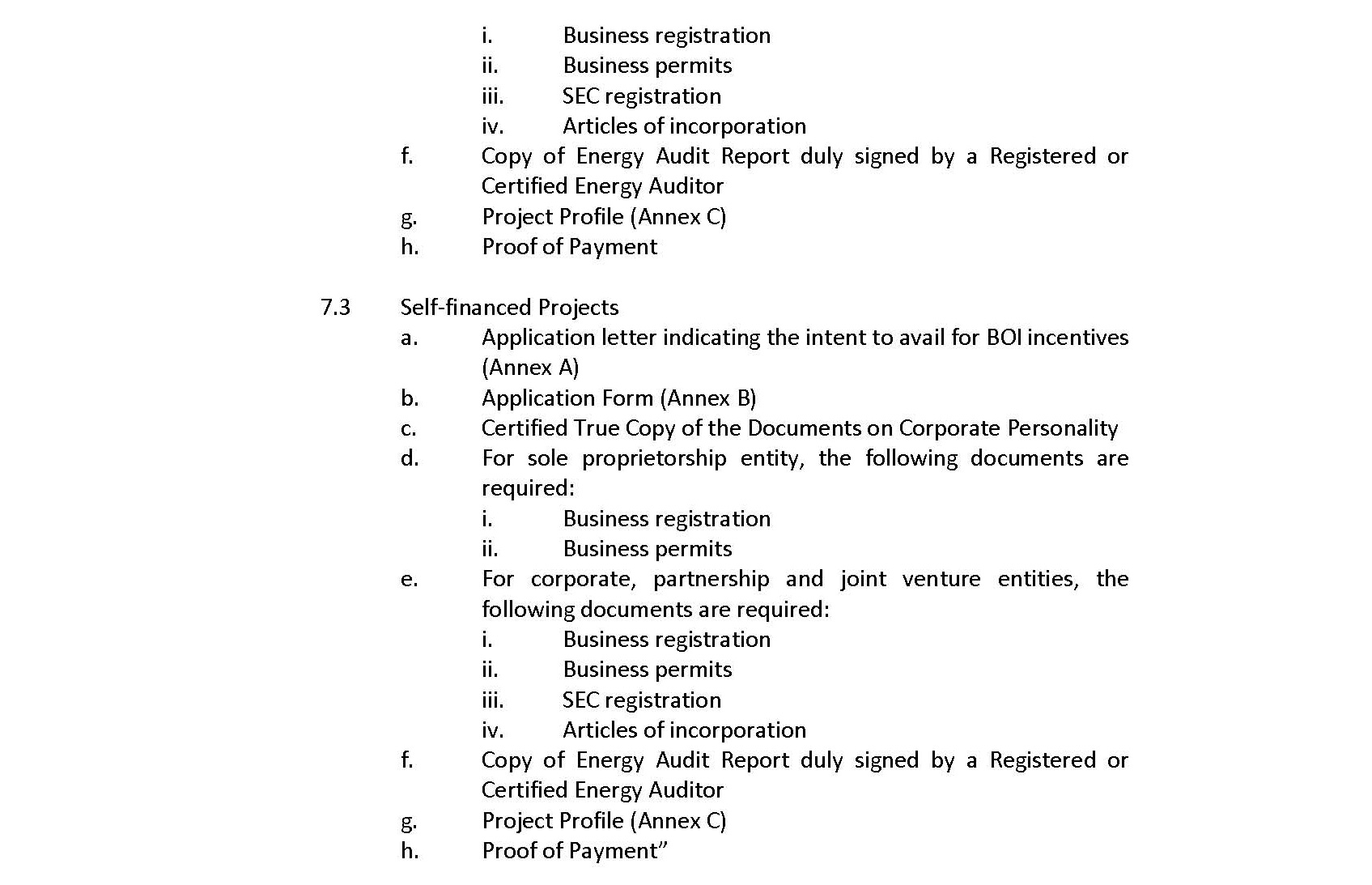The Department of Energy (“DOE”) issued on 11 May 2021 Department Circular No. DC-2-21-05-0011 (“DC-2-21-05-0011”), or the “Guidelines for the Endorsement of Energy Efficiency Projects to the Board of Investments for Fiscal Incentives”. DC-2-21-05-0011 was published in a newspaper of general circulation on 17 June 2021 and shall be effective on 02 July 2021.
DC-2-21-05-0011 operationalizes Section 6 (a) and 25 of Republic Act No. 11285 or the “Energy Efficiency and Conservation Act” (“EEC Act”) and Section 71 of Department Circular No. DC2019-11-0014 or the Implementing Rules and Regulations of the EEC Act (“EEC-IRR”) which provide that the Board of Investments (“BOI”) shall include energy efficiency projects in the annual Investment Priorities Plan (IPP) for incentives under Executive Order No. 226 (“EO 226”) and any other applicable laws for ten (10) years.
Furthermore, under Section 72 of the EEC-IRR, the energy efficiency projects must be certified by the DOE and registered with the BOI in order to qualify for the availment of the fiscal incentives allowed under the EEC Act. In this regard, DC-2-21-05-0011 establishes the guidelines, rules, and procedures in the endorsement of energy efficiency projects to the BOI for registration in order to grant fiscal incentives to the proponents for the said project.
The relevant provisions of DC-2-21-05-0011 classify energy efficiency projects, provide for the qualification of an energy efficiency project and outline the application requirements:
“Section 4. Classification of Energy Efficiency Project. To simply categorize energy efficiency projects, the following project classification is hereby introduced:
4.1 Simple Energy Efficiency Projects refers to those projects that involve new installation, upgrading or retrofitting of a specific equipment or devices in the system such as but not limited to lighting retrofit, automated lighting control system or smart control system, HVAC upgrades, boiler replacement, and other similar devices or equipment within a system.
4.2 Complex Energy Efficiency Projects refers to those projects that involve new installation, retrofitting or upgrading of system or a combination of a systems such as but not limited to Cogeneration System, District Cooling System, Steam System from boiler to the steam load process equipment including its auxiliaries, Pumping System, HVAC System and its distribution line system, Compressed Air System, Process line System for kilns and furnaces, Smart Manufacturing System, Building Energy Management System, etc. This includes Demand Side Management (DSM) Projects or any other innovative DSM schemes with the intention to lower down overall demand consumption in the grid, which project were being implemented by an electric distribution utility or ESCO.
Section 5. Qualifications of an Energy Efficiency Project. Energy Efficiency Projects that will realize energy savings, as further defined under Section 9 of this Department Circular, may qualify for registration, and be entitled to the incentives provided for under EO 226 are as follows:
5.1 Installation of equipment or system for new construction facility, plant, or establishments.
5.2 Retrofit project that involves the installation of equipment, devices, or system.
5.3 Modifications or expansions of an existing plant, facility or establishment that involves the installation of equipment, devices, or system.
5.4 Energy savings and project cost must meet the prescribed minimum project boundary under Section 9 of this Department Circular.
5.5 Pioneering energy efficiency projects for new construction facility, plant, or establishments subject to Article 17 of EO 226.
5.6 Energy efficiency projects categorized as ESCO-Initiated, TPPD/Project SPV, or Self-Financed.
x x x


As established in Section 7 above, the application requirements vary and depend on whether the energy efficiency project is ESCO-Initiated, Self-financed or developed by a Third Party Project Developer (“TPPD”)/Project Special Purpose Vehicle (“SPV”). In this regard, Section 3 defines the foregoing terms:
“3.2 ‘ESCO-Initiated Projects’ refers to energy efficiency projects implemented by an ESCO that generate energy savings or improvement in productivity, and in turn, cost savings. The ESCO provides all the funding requirements of the project at no cost to the owner and payment of services rendered is derived from the generated savings;
x x x
3.4 ‘Self-financed Projects’ refers to energy efficiency projects wherein the company used of own capital fund and resources to implement an energy efficiency projects. This is in cases where a company had engaged the services of an ESCO and paid upfront for the services rendered by way of progress payments or any other similar schemes, the said company or the project owner can apply to the DOE for the endorsement of their energy efficiency projects to BOI for fiscal incentive; and
3.5 ‘Third Party Project Developer (TPPD)/Project Special Purpose Vehicle (SPV)’ are asset owners/investors of energy efficiency projects and request for the endorsement directly from the DOE. Although TPPDs and Project SPVs are not necessarily established as ESCOs, they nevertheless engage the services of an ESCO for the energy efficiency project.”
In order to avail of fiscal incentives, the DOE shall endorse energy efficiency projects that passed the technical and the economic evaluation criteria (Section 6, DC-2-21-05-0011). The technical and the economic evaluation criteria are laid out in Section 9 of DC-2-21-05-0011, which, among others, provides that the energy efficiency project must meet the 15% project boundary and a minimum Project Investment Cost of P10,000,000.00. The 15% boundary refers to “the absolute value of energy savings computed from the reference energy consumption to the new consumption or after efficiency projects has been installed and operated on its full commercial operation” (Section 9.1, DC-2-21-05-0011).
The rate of income tax holiday a proponent is entitled to depends on the annual energy savings at the project boundary and on whether the energy efficiency project is ESCO-Initiated, Self-financed or developed by a TPPD/SPV (Section 9.2, DC-2-21-05-0011).
Section 9.5 of DC-2-21-05-0011 implements Section 25 of the EEC Act which exempts foreign-owned ESCOs implementing energy efficiency projects from the nationality requirement under Article 32 (1) of EO 226.
The Application Procedure and Processing of the Application are outlined in Section 8.7 which states that “The evaluation process including the issuance of certificate of endorsement to BOI shall be completed within twenty (20) working days from receipt of all required documents.”
